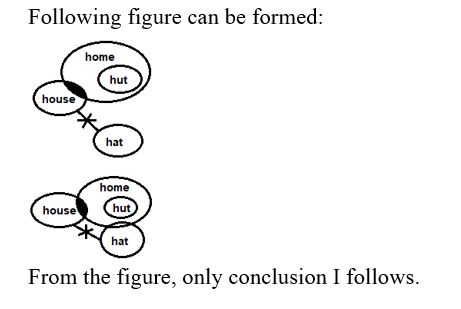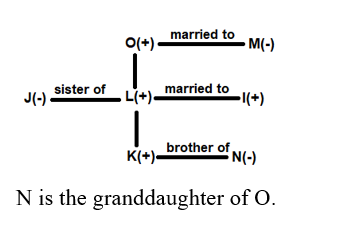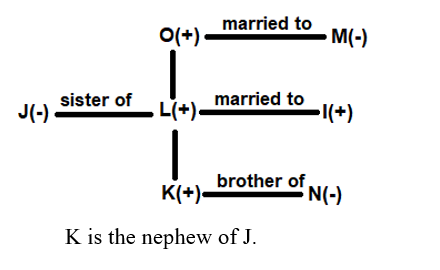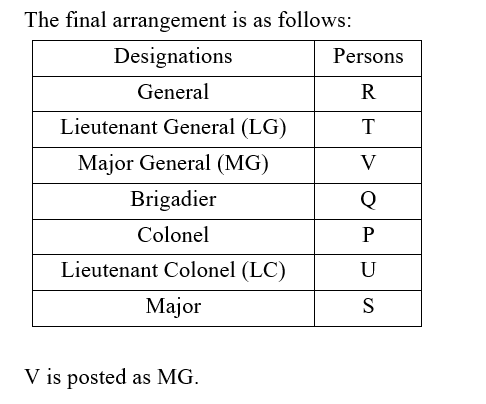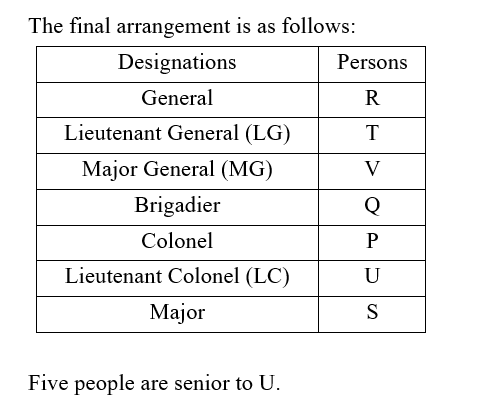Question 1:
Directions: Answer the questions based on the information given below.
निर्देश: नीचे दी गई जानकारी के आधार पर प्रश्नों के उत्तर दें।
The given data is about number of chicks and ducks in three different farms. The ratio of the number of chicks and ducks in farm ‘A’ is 8:5, respectively. The number of chicks and ducks in farm ‘B’ is 25% more and 40% less, respectively than that in farm ‘A’. The ratio of the number of chicks in farms ‘B’ and ‘C’ is 5:3, respectively. The number of ducks in farm ‘C’ is 150 more than that in farm ‘B’. Number of (chicks + ducks) in farm ‘C’ is 2400.
दी गई जानकारी तीन अलग-अलग फार्म में चूजों और बत्तखों की संख्या के बारे में है।फार्म ‘A’ में चूजों और बत्तखों की संख्या का अनुपात क्रमशः 8:5 है। फार्म ‘B’ में चूजों और बत्तखों की संख्या फार्म ‘A’ की तुलना में क्रमशः 25% अधिक और 40% कम है। फार्म ‘B’ और ‘C’ में चूजों की संख्या का अनुपात क्रमशः 5:3 है। फार्म 'C' में बत्तखों की संख्या फार्म ‘B’ की तुलना में 150 अधिक है। फार्म 'C' में (चूजे + बत्तख) की संख्या 2400 है।
Find the average number of chicks in given three farms.
दिए गए तीनों फार्म में चूजों की औसत संख्या ज्ञात कीजिए।
Question 2:
Direction : In the question below there are three statements followed by two conclusions I and II. You have to take the three given statements to be true even if they seem to be at variance from commonly known facts and then decide which of the given conclusions logically follows from the three statements disregarding commonly known facts.
निर्देश : निम्नलिखित प्रश्न में तीन कथन के बाद दो निष्कर्ष I और II दिए गए हैं।आपको दिए गए कथनों को सत्य मानना है भले ही वह ज्ञात तथ्यों से भिन्न भी हो और फिर यह तय करना है कि दिए गए निष्कर्षों में से कौन सा निष्कर्ष इन कथनों का तर्कसंगत अनुसरण करता है।
Statements: No hat is house
कथन: कोई भी हैट हाउस नहीं है
Only a few house is home
केवल कुछ हाउस होम है
Only home is hut
केवल होम हट है
Conclusions: I. Some home being hat is a possibility
निष्कर्ष: I. कुछ होम के हैट होने की एक संभावना है
II. A few hut can be house
II. कुछ हट हाउस हो सकते है
Question 3:
Direction : In the question, assuming the given statements to be true, find which of the conclusion (s) among given three conclusions is /are definitely true and then give your answer accordingly.
निर्देश : निम्नलिखित प्रश्न में, दिए गए कथनों को सत्य मानकर, यह तय करना है कि दिए गए निष्कर्षों में से कौन सा निष्कर्ष निश्चित रूप से सत्य है और फिर उसी अनुसार अपना उत्तर दें।
Statements: S < 7 = 8; U < S ≤ T; U < 8 ≤ 9
Conclusions: I. U < 9 II. T > U
III. 7 > T
Question 4:
Direction : In the question, assuming the given statements to be true, find which of the conclusion (s) among given three conclusions is /are definitely true and then give your answer accordingly.
निर्देश : निम्नलिखित प्रश्न में, दिए गए कथनों को सत्य मानकर, यह तय करना है कि दिए गए निष्कर्षों में से कौन सा निष्कर्ष निश्चित रूप से सत्य है और फिर उसी अनुसार अपना उत्तर दें।
Statements: A ≤ C ≥ B; C ≤ D < E; G > E ≤ F
Conclusions: I. A ≤ F II. G > B
III. F > D
Question 5:
Direction : In the question, assuming the given statements to be true, find which of the conclusion (s) among given three conclusions is /are definitely true and then give your answer accordingly.
निर्देश : निम्नलिखित प्रश्न में, दिए गए कथनों को सत्य मानकर, यह तय करना है कि दिए गए निष्कर्षों में से कौन सा निष्कर्ष निश्चित रूप से सत्य है और फिर उसी अनुसार अपना उत्तर दें।
Statements: K < 2 ≤ 8; 1 > K = 3 < L; 8 > B ≥ 5
Conclusions: I. 1 > 8 II. L > B
III. 3 < 8
Question 6:
Direction : In the question, assuming the given statements to be true, find which of the conclusion (s) among given three conclusions is /are definitely true and then give your answer accordingly.
निर्देश : निम्नलिखित प्रश्न में, दिए गए कथनों को सत्य मानकर, यह तय करना है कि दिए गए निष्कर्षों में से कौन सा निष्कर्ष निश्चित रूप से सत्य है और फिर उसी अनुसार अपना उत्तर दें।
Statements: 5 ≥ Z<T; P<T ≤ I; 5<X ≤ V
Conclusions: I. V>Z II. I >X
III. P<5
Question 7:
Directions : Answer the questions based on the information given below.
निर्देश : नीचे दी गई जानकारी के आधार पर प्रश्नों के उत्तर दें।
There are seven-members and three generations in a family. There is no single parent. There are only two married couples. I is the sister-in-law of J. K is the son of L. M is the grandmother of N. O is the paternal grandfather of K. J is an unmarried female. L has only one daughter.
एक परिवार में सात सदस्य और तीन पीढ़ियाँ हैं।कोई एकल अभिवावक नहीं है। केवल दो विवाहित जोड़े हैं। I, J की साली/ननद/भाभी है। K, L का पुत्र है। M, N की दादी/नानी है। O, K का दादा है। J एक अविवाहित महिला है। L की केवल एक पुत्री है।
How is N related to O?
N O से कैसे सम्बंधित है?
Question 8:
Directions : Answer the questions based on the information given below.
निर्देश : नीचे दी गई जानकारी के आधार पर प्रश्नों के उत्तर दें।
There are seven-members and three generations in a family. There is no single parent. There are only two married couples. I is the sister-in-law of J. K is the son of L. M is the grandmother of N. O is the paternal grandfather of K. J is an unmarried female. L has only one daughter.
एक परिवार में सात सदस्य और तीन पीढ़ियाँ हैं।कोई एकल अभिवावक नहीं है। केवल दो विवाहित जोड़े हैं। I, J की साली/ननद/भाभी है। K, L का पुत्र है। M, N की दादी/नानी है। O, K का दादा है। J एक अविवाहित महिला है। L की केवल एक पुत्री है।
How is K related to J?
K, J से किस प्रकार संबंधित है?
Question 9:
Direction : Answer the questions based on the information given below.
निर्देश : नीचे दी गई जानकारी के आधार पर प्रश्नों के उत्तर दें।
Seven people P, Q, R, S, T, U, and V posted in seven different ranks in the Indian Army i.e., General, Lieutenant General (LG), Major General (MG), Brigadier, Colonel, Lieutenant Colonel (LC) and Major but not in the same order. Also, ranks are given in descending order such that General being the senior-most post and Major being the junior-most post among the given posts of Indian Army.
Note: If it is given that X is senior to Y then it means X ranks in a higher post than Y.
R is senior to the one, who is the Brigadier. More than two designations are there between R and P, who is not LC. There is only one person in the hierarchy between P and S. Number of people designated between R and Q is same as the number of people designated between Q and S. U is junior to V. Q is not the LG. Only one person is designated between Q and T, who is senior to V.
सात लोग P, Q, R, S, T, U, और V भारतीय सेना में सात अलग-अलग रैंकों में तैनात हैं अर्थात जनरल, लेफ्टिनेंट जनरल (LG), मेजर जनरल (MG), ब्रिगेडियर, कर्नल, लेफ्टिनेंट कर्नल (LC) और मेजर लेकिन ये आवश्यक नहीं कि समान क्रम में इसके अलावा, रैंक अवरोही क्रम में दी गई हैं जहाँ भारतीय सेना में दिए गए पदों में से जनरल सबसे वरिष्ठ पद है और मेजर सबसे कनिष्ठ पद है।
ध्यान दें:
यदि यह ज्ञात है कि X, Y से वरिष्ठ है तो इसका अर्थ है कि X, Y से उच्च पद पर है।
R उस व्यक्ति से वरिष्ठ है, जो ब्रिगेडियर है। R और P के बीच दो से अधिक पद हैं और P, LC नहीं है। P और S के बीच पदानुक्रम में केवल एक व्यक्ति है। R और Q के बीच पदानुक्रम में व्यक्तियों की संख्या और Q और S के बीच पदानुक्रम में व्यक्तियों की संख्या समान है। U, V से कनिष्ठ है। Q, LG नहीं है। Q और T जो V से वरिष्ठ है, के बीच केवल एक व्यक्ति को नामित किया गया है।
Who among the following posted as MG?
निम्नलिखित में से किसका पद MG है?
Question 10:
Direction : Answer the questions based on the information given below.
निर्देश : नीचे दी गई जानकारी के आधार पर प्रश्नों के उत्तर दें।
Seven people P, Q, R, S, T, U, and V posted in seven different ranks in the Indian Army i.e., General, Lieutenant General (LG), Major General (MG), Brigadier, Colonel, Lieutenant Colonel (LC) and Major but not in the same order. Also, ranks are given in descending order such that General being the senior-most post and Major being the junior-most post among the given posts of Indian Army.
Note: If it is given that X is senior to Y then it means X ranks in a higher post than Y.
R is senior to the one, who is the Brigadier. More than two designations are there between R and P, who is not LC. There is only one person in the hierarchy between P and S. Number of people designated between R and Q is same as the number of people designated between Q and S. U is junior to V. Q is not the LG. Only one person is designated between Q and T, who is senior to V.
सात लोग P, Q, R, S, T, U, और V भारतीय सेना में सात अलग-अलग रैंकों में तैनात हैं अर्थात जनरल, लेफ्टिनेंट जनरल (LG), मेजर जनरल (MG), ब्रिगेडियर, कर्नल, लेफ्टिनेंट कर्नल (LC) और मेजर लेकिन ये आवश्यक नहीं कि समान क्रम में इसके अलावा, रैंक अवरोही क्रम में दी गई हैं जहाँ भारतीय सेना में दिए गए पदों में से जनरल सबसे वरिष्ठ पद है और मेजर सबसे कनिष्ठ पद है।
ध्यान दें:
यदि यह ज्ञात है कि X, Y से वरिष्ठ है तो इसका अर्थ है कि X, Y से उच्च पद पर है।
R उस व्यक्ति से वरिष्ठ है, जो ब्रिगेडियर है। R और P के बीच दो से अधिक पद हैं और P, LC नहीं है। P और S के बीच पदानुक्रम में केवल एक व्यक्ति है। R और Q के बीच पदानुक्रम में व्यक्तियों की संख्या और Q और S के बीच पदानुक्रम में व्यक्तियों की संख्या समान है। U, V से कनिष्ठ है। Q, LG नहीं है। Q और T जो V से वरिष्ठ है, के बीच केवल एक व्यक्ति को नामित किया गया है।
How many people are senior to U?
कितने व्यक्ति U से वरिष्ठ हैं?


